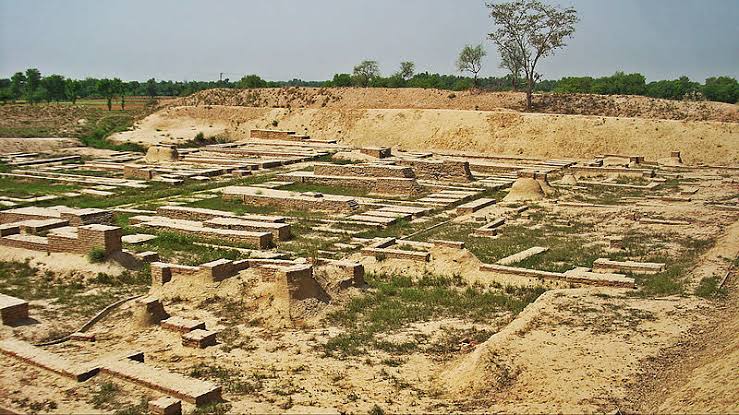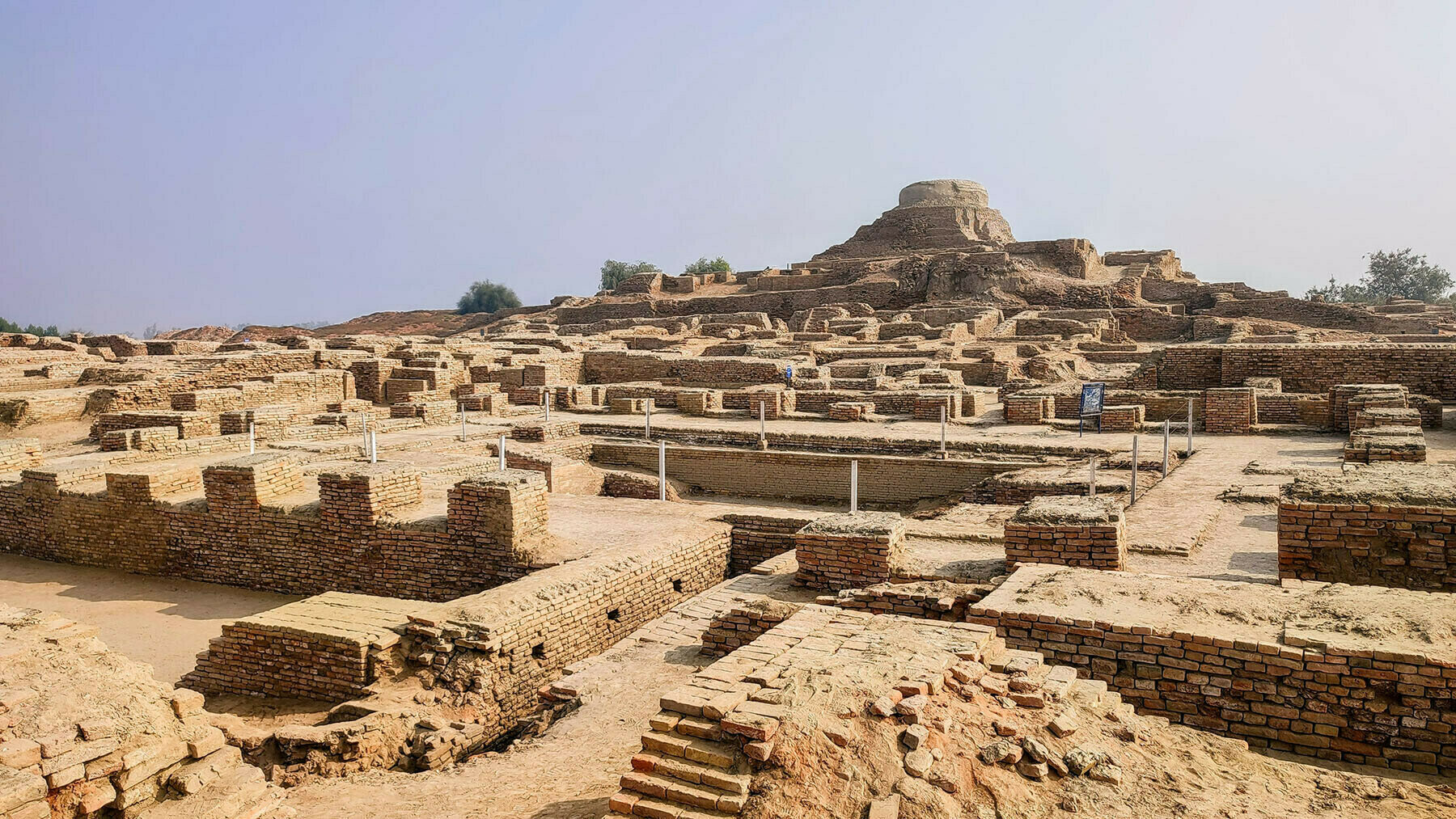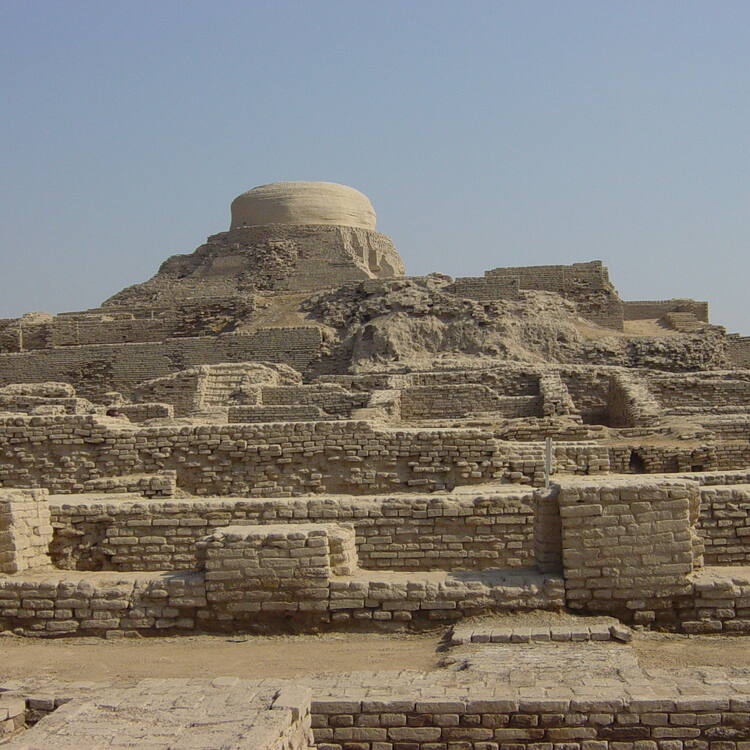Introduction
Imagine a city that thrived over 4,500 years ago, with advanced infrastructure, skilled artisans, and a sprawling trade network spanning thousands of miles. This was Harappa, a remarkable urban center that was part of the Indus Valley Civilization – one of the earliest and most sophisticated ancient cultures in the world.
Emerging around 2600 BC in what is now modern-day Pakistan, Harappa grew to become a major hub of activity, with multi-story buildings, an advanced plumbing system, and craftspeople producing exquisite jewelry, intricate pottery, and other impressive tools and goods. The Harappans demonstrated a remarkable level of technological prowess and commercial reach, trading with distant civilizations like Mesopotamia.

Yet, despite these impressive achievements, Harappa met a mysterious end around 1900 BC when the city was suddenly abandoned. What caused this sophisticated urban center to disappear? Was it a natural disaster, an invasion, or perhaps climate change? Unfortunately, the Harappans left behind no written records we can fully decipher, leaving us with more questions than answers about their sudden downfall.
Even after extensive archaeological excavations, much about Harappa and the Indus Valley Civilization remains shrouded in mystery. Their captivating story, however, continues to fascinate historians, archaeologists, and anyone intrigued by the remarkable accomplishments of this long-lost ancient culture. In this blog post, we’ll delve into the remarkable rise and puzzling decline of Harappa, uncovering the secrets of this “Lost City” from over 4,500 years ago.
The Rise of Harappa: An Urban Powerhouse of the Ancient World
Harappa emerged as part of the Indus Valley Civilization, which flourished in the Indus River basin in what is now Pakistan and northwest India from around 3300 BC to 1300 BC. This ancient culture is considered one of the earliest and most sophisticated urban societies in human history, predating even the civilizations of ancient Mesopotamia and Egypt.
At its peak, the Indus Valley Civilization encompassed over 1,000 settlements, including major urban centers like Harappa, Mohenjo-daro, and Lothal. Harappa, in particular, grew to become a bustling metropolis, with a population estimated between 23,000 to 34,000 people. The city covered an area of around 150 hectares (370 acres), making it one of the largest urban settlements of its time.
What made Harappa such an impressive and influential city? For starters, the Harappans demonstrated remarkable engineering and architectural prowess. The city featured a sophisticated drainage and sewage system, with covered brick drains running beneath the streets to carry wastewater and refuse. Harappa also had multi-story buildings constructed with baked bricks, a rarity in the ancient world. These buildings were arranged in a grid-like pattern, showcasing the Harappans’ advanced urban planning abilities.

In addition to their impressive infrastructure, the Harappans were skilled artisans, producing a wide range of exquisite goods. Archaeologists have uncovered numerous examples of intricate jewelry, beautifully crafted pottery, and advanced tools made from copper, bronze, and stone. The Harappans were particularly renowned for their production of seals, which were used for trade, religious purposes, and to identify ownership of goods.
One of the most remarkable aspects of Harappa, however, was its expansive trade network. The city’s strategic location along major river routes allowed the Harappans to establish commercial ties with distant civilizations, including Mesopotamia, ancient Persia, and Central Asia. Archaeologists have found evidence of goods from these far-flung regions, such as lapis lazuli from Afghanistan and copper from Oman, in Harappan archaeological sites.
This extensive trade network not only showcased the Harappans’ commercial prowess but also demonstrated their technological and organizational capabilities. Maintaining such far-reaching trade relationships required sophisticated transportation methods, communication systems, and administrative structures – all of which the Harappans seemed to possess in abundance.
The Decline and Disappearance of Harappa
Despite its impressive achievements and influence, Harappa met a sudden and mysterious end around 1900 BC. The once-thriving city was abruptly abandoned, leaving behind a puzzling archaeological enigma that has captivated scholars for decades.
What caused the downfall of this sophisticated urban center? Unfortunately, the Harappans left behind no written records that could provide clear answers, leaving historians and archaeologists to piece together the clues from the physical evidence found at the site.
One of the leading theories regarding Harappa’s decline is that it was the result of a natural disaster, such as a devastating flood or earthquake. Excavations at the site have uncovered evidence of widespread destruction, including damaged buildings and the presence of a thick layer of silt, which could indicate a major flooding event. Additionally, some archaeologists have found traces of fire, suggesting the city may have been partially burned down.

Another possible explanation for Harappa’s demise is the impact of climate change. During the Indus Valley Civilization’s peak, the region experienced a relatively stable and favorable climate, with sufficient rainfall to support the civilization’s agricultural practices. However, around 2000 BC, the climate began to shift, becoming drier and more arid. This environmental change may have disrupted the Harappans’ food production and water supply, ultimately leading to the collapse of their urban centers.
Some scholars also propose that Harappa’s downfall may have been the result of an invasion or conflict with neighboring civilizations. While the Harappans were known for their peaceful and well-organized society, the sudden abandonment of the city could suggest an external threat or attack that forced the population to flee. However, evidence of widespread violence or warfare at the site is limited, making this theory less widely accepted.
Regardless of the exact cause, the disappearance of Harappa and the broader Indus Valley Civilization remains a subject of ongoing debate and investigation. What is clear is that the Harappans’ remarkable achievements, including their advanced urban planning, sophisticated infrastructure, and extensive trade networks, made their sudden decline all the more puzzling and intriguing.
The Enduring Mysteries of Harappa
Even after decades of archaeological excavations and research, much about Harappa and the Indus Valley Civilization remains shrouded in mystery. The lack of written records, the limited understanding of their language, and the fragmented nature of the physical evidence have all contributed to the challenges in piecing together a complete picture of this ancient culture.
One of the primary mysteries surrounding Harappa is the nature of its writing system. The Harappans developed a script that has not yet been fully deciphered, leaving researchers unable to access the wealth of information that may have been recorded in their written records. Without a clear understanding of their language, scholars have struggled to decipher the meaning behind the numerous seals, inscriptions, and other artifacts found at Harappan sites.

Another enduring puzzle is the overall social and political structure of the Indus Valley Civilization. Unlike the hierarchical, centralized power structures of ancient Mesopotamia and Egypt, the Harappans appear to have had a more decentralized, egalitarian society. The lack of clear evidence of a ruling monarch or dominant religious authority has led some researchers to speculate that the Harappans may have had a more democratic or cooperative form of governance.
Additionally, the reasons behind the sudden and widespread abandonment of Indus Valley cities like Harappa continue to be a source of intense debate. While various theories have been proposed, from natural disasters to climate change to external conflicts, the exact causes remain elusive. The absence of clear historical records or accounts from the Harappans themselves has made it challenging to pinpoint the specific factors that led to the civilization’s demise.
Despite these lingering mysteries, the legacy of Harappa and the Indus Valley Civilization continues to captivate scholars and the public alike. The impressive achievements of this ancient culture, from their advanced urban planning to their expansive trade networks, have left an indelible mark on our understanding of human history and the remarkable capabilities of early civilizations.
Conclusion: The Enduring Allure of Harappa
Harappa, the lost city of the Indus Valley Civilization, stands as a testament to the remarkable accomplishments of our ancient ancestors. From its sophisticated infrastructure and skilled artisanry to its expansive trade networks, this 4,500-year-old urban center was a true marvel of the ancient world.
Yet, despite the wealth of information that has been uncovered through archaeological excavations, much about Harappa and the Indus Valley Civilization remains shrouded in mystery. The reasons behind the city’s sudden abandonment, the nature of its writing system, and the overall social and political structure of this ancient culture continue to captivate scholars and intrigue the public.
As we delve deeper into the past and uncover more clues about Harappa’s history, the allure of this lost city only grows stronger. Its captivating story serves as a reminder of the incredible ingenuity and resilience of our human ancestors, who were able to build such a sophisticated civilization millennia ago. The mysteries of Harappa, in turn, challenge us to keep exploring, discovering, and piecing together the fragments of our shared past.
Whether you’re a historian, an archaeologist, or simply someone fascinated by the wonders of the ancient world, the story of Harappa is sure to captivate and inspire. As we continue to unravel the secrets of this lost city, we gain a deeper understanding of our own human journey, and the remarkable capabilities that have defined our species for thousands of years.
